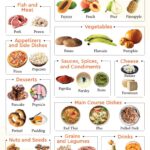Processed food is a term you hear often, but what exactly does it mean? Simply put, a processed food is any food that has been altered from its natural state for safety, convenience, or taste. Almost everything we eat undergoes some form of processing. Let’s delve into what Processed Foods are, the different levels of processing, and how they fit into a healthy eating plan.
What Does Food Processing Actually Mean?
Food processing encompasses a wide range of techniques applied to foods after harvest or slaughter. These methods are used for various reasons, significantly impacting the food we consume daily. Common reasons for processing include:
- Enhancing Food Safety: A primary goal of food processing is to eliminate harmful bacteria and make food safe for consumption. Pasteurization of milk, for example, is a crucial process that kills dangerous microorganisms, preventing illnesses.
- Improving Usability and Preparation: Processing can make foods easier to use. Pressing seeds to extract oil simplifies cooking and adds essential fats to our diets. Similarly, milling wheat into flour is a form of processing that makes it possible to bake bread and other staples.
- Extending Shelf Life and Preservation: Many processing techniques are employed to preserve food and prevent spoilage. Canning, freezing, and drying are all methods that extend the life of food products, reducing waste and ensuring food availability throughout the year.
- Modifying Taste and Appeal: Processing can alter the flavor and texture of food, making it more palatable. Adding salt, sweeteners, and spices are forms of processing that enhance taste.
- Creating Convenience Foods: In today’s fast-paced world, processed foods play a significant role in providing convenient meal options. Ready meals and snacks are examples of processed foods designed for quick consumption.
Ultra-Processed Foods: Identifying the Difference
Within the category of processed foods, there’s a subgroup known as ultra-processed foods (UPFs). These foods undergo more extensive industrial processing compared to simply processed foods. UPFs are often characterized by the inclusion of ingredients not typically used in home cooking.
These ingredients can include:
- Preservatives: To extend shelf life significantly.
- Artificial Sweeteners: To enhance sweetness without adding calories.
- Emulsifiers: To blend ingredients that would naturally separate, like oil and water.
- Artificial Colors and Flavors: To enhance visual appeal and taste.
Examples of ultra-processed foods commonly found in supermarkets include:
- Sweetened Beverages: Sodas, sugary juices, and energy drinks.
- Salty Snacks: Potato chips, corn chips, and many packaged snack mixes.
- Packaged Baked Goods: Cakes, cookies, and pastries sold in wrappers.
- Ice Cream and Sweet Treats: Commercially produced ice cream, candies, and chocolate bars.
- Certain Ready-to-Eat Meals: Pre-made meals that require minimal preparation, often found frozen or refrigerated.
- Processed Meat Products: Sausages, hot dogs, and pre-packaged meat pies.
Processed Foods in a Balanced and Healthy Diet
It’s crucial to recognize that not all processed foods are detrimental to health. In fact, many minimally processed foods can be part of a nutritious diet. However, the concern often lies with ultra-processed foods. Many UPFs are high in calories, unhealthy fats (saturated and trans fats), sodium, and added sugars, while being low in essential nutrients like fiber and vitamins.
Consuming excessive amounts of calories, saturated fat, salt, and sugar, while lacking in fruits, vegetables, and fiber, is detrimental to overall health. Diets rich in ultra-processed foods have been linked to an increased risk of various health problems, including obesity, type 2 diabetes, and cardiovascular disease. While research continues to investigate whether these health risks are directly caused by the processing itself or primarily due to the high levels of unhealthy ingredients often found in UPFs, moderation is key.
However, it’s important to note that some processed foods can be valuable components of a healthy diet. Examples include:
- Wholemeal Bread: Provides fiber and essential nutrients.
- Wholegrain Breakfast Cereals: Especially those high in fiber and low in added sugar.
- Canned Beans and Legumes: A convenient source of protein and fiber.
- Frozen Fruits and Vegetables: Offer comparable nutritional value to fresh produce and can be more affordable and convenient.
For most individuals, reducing the consumption of ultra-processed foods high in saturated fat, salt, and sugar is beneficial. These foods are not essential for a balanced diet and should be consumed sparingly. A healthy dietary pattern emphasizes plenty of fruits, vegetables, and whole grains such as whole wheat pasta, brown rice, and oats.
Making Informed Choices with Food Labels
Understanding food labels is essential for making healthier choices when it comes to processed foods. Food labels provide valuable information about the nutritional content of packaged foods, allowing you to compare products and select options that align with your dietary needs.
Most pre-packaged foods are required to display nutrition information panels. These labels typically include details on:
- Calories: The energy content of the food.
- Total Fat and Saturated Fat: The amount and type of fat.
- Sodium: The salt content.
- Sugars: Both naturally occurring and added sugars.
- Fiber: An important nutrient for digestive health.
Some food labels also use color-coded systems to visually indicate whether a food is high, medium, or low in fat, saturated fat, salt, and sugar, making it easier to quickly assess the nutritional profile of a product. By paying attention to food labels, you can make more informed decisions and navigate the world of processed foods to support a healthier diet.

